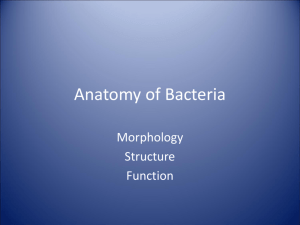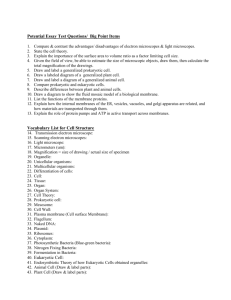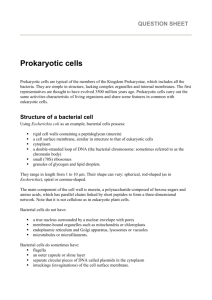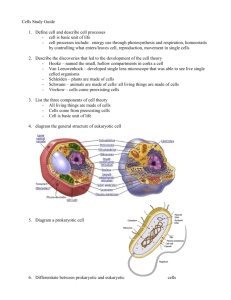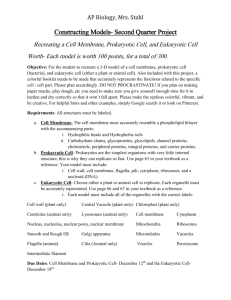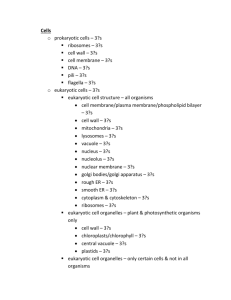prokaryotes
advertisement
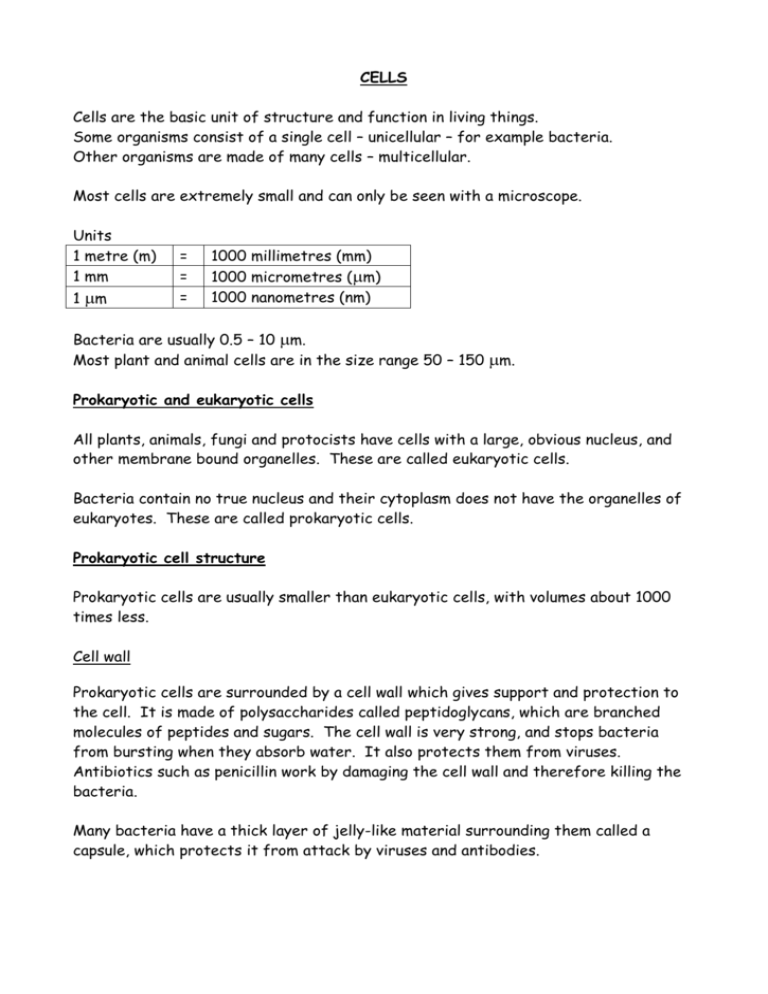
CELLS Cells are the basic unit of structure and function in living things. Some organisms consist of a single cell – unicellular – for example bacteria. Other organisms are made of many cells – multicellular. Most cells are extremely small and can only be seen with a microscope. Units 1 metre (m) 1 mm = = 1 m = 1000 millimetres (mm) 1000 micrometres (m) 1000 nanometres (nm) Bacteria are usually 0.5 – 10 m. Most plant and animal cells are in the size range 50 – 150 m. Prokaryotic and eukaryotic cells All plants, animals, fungi and protocists have cells with a large, obvious nucleus, and other membrane bound organelles. These are called eukaryotic cells. Bacteria contain no true nucleus and their cytoplasm does not have the organelles of eukaryotes. These are called prokaryotic cells. Prokaryotic cell structure Prokaryotic cells are usually smaller than eukaryotic cells, with volumes about 1000 times less. Cell wall Prokaryotic cells are surrounded by a cell wall which gives support and protection to the cell. It is made of polysaccharides called peptidoglycans, which are branched molecules of peptides and sugars. The cell wall is very strong, and stops bacteria from bursting when they absorb water. It also protects them from viruses. Antibiotics such as penicillin work by damaging the cell wall and therefore killing the bacteria. Many bacteria have a thick layer of jelly-like material surrounding them called a capsule, which protects it from attack by viruses and antibodies. Cell membrane The prokaryotic cell membrane has a similar structure to the eukaryotic cell membrane, but it does not contain cholesterol. Photosynthetic bacteria have invaginations of the membrane which project inside the cell, and hold the molecules which are involved in capturing light energy. Cytoplasm Bacterial cytoplasm is a water based fluid containing ribosomes, nutrients, ions, enzymes, waste products and storage granules. It does not have endoplasmic reticulum (see eukaryotic cells) Ribosomes Ribosomes are the site of protein synthesis. Bacterial ribosomes are similar to eukaryotic ribosomes, but they are smaller Flagella Flagella are used for movement. They are long projections which rotate like propellers, pushing the bacteria along. Consist of microtubules arranged in a circle of nine pairs surrounding a central pair. Made of protein. Bacterial chromosomes The DNA of bacteria is a single, large, circular molecule. Prokaryotic DNA does not form chromosomes, and does not have histone proteins associated with it. It lies free in the cytoplasm as there is no nuclear envelope in prokaryotes. Plasmids Bacteria may also have small rings of DNA called plasmids, as well as the bacterial chromosome. Plasmids often carry genes for characteristics such as antibiotic resistance, and they can be passed from one bacterium to another. Plasmids are often used in genetic engineering, for transferring genes from one cell to another. Glycogen granules and lipid droplets These are found in the cytoplasm and are used for storage. Read page 65 and page 70-72 Jones and Jones

